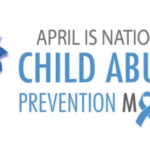Strides are ongoing to remove racial, ethnic, and gender barriers, but when discussing health and medicine, race and ethnicity are important categories to consider. The following are seven medical conditions that affect certain minority groups at a higher rate.
- Cardiovascular disease. The CDC lists heart disease as the leading cause of death in the U.S., noting that the risk for heart disease and stroke is 33% higher for Black Americans than the overall population, and that American Indians and Native Alaskans die from heart disease at an earlier age.
- Obesity. The American Heart Association says Black American women and Mexican-American women have higher rates of obesity than Caucasian women, leading to other health conditions, such as diabetes and heart disease.
- Mental health. According to the CDC, the COVID-19 pandemic had a more detrimental effect on the mental health of some racial and ethnic minority groups, versus non-Hispanic and White people.
- Sickle cell disease. Chronic sickle cell disease affects one in 365 Black and Hispanic people versus one in 16,300 people who are not Black or Hispanic. The primary treatment for the disease is a bone marrow transplant, and is typically performed on patients ages 16 and younger.
- Alcoholism. American Addiction Centers notes that Native Americans/Alaskans have higher rates of lifetime alcohol use, often leading to serious health issues, including liver disease.
- HIV. Of every race and ethnicity, Black people are the most affected by HIV, which is compounded by the lack of access to treatment.
- Diabetes. Hispanics are about 50% more likely to die from diabetes than Caucasians.
Race and ethnicity affect disease risk, and recognition of that fact on the part of various minority groups can save lives.












